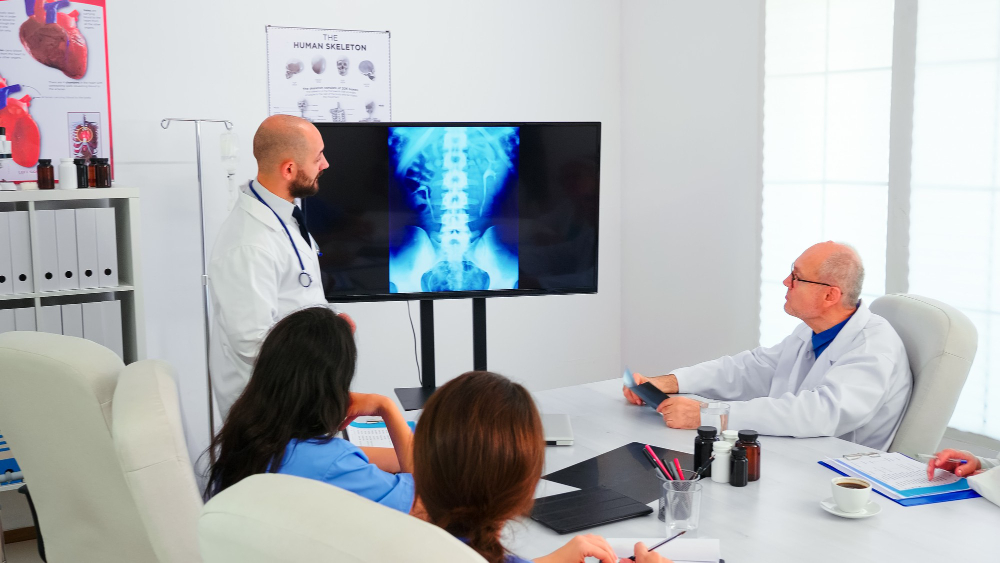Introduction
In the realm of modern healthcare, technological advancements continually revolutionize the way diseases are diagnosed and treated. Lung cancer, one of the most prevalent and deadly cancers worldwide, presents a significant challenge in early detection. However, with the advent of sophisticated lung cancer screening software, healthcare professionals now have a powerful tool at their disposal.
Definition
Software for screening for lung cancer is a term used to describe specialised computer programmes created to help diagnose lung cancer early by analysing medical imaging, such as CT scans. Radiologists and other medical practitioners can find worrisome nodules or lesions in the lungs early on with the use of these tools, which use sophisticated algorithms to discover and analyse possible abnormalities. The likelihood of a successful course of treatment and improved patient outcomes can be greatly increased by early identification.
The Rising Challenge of Lung Cancer:
- Globally, lung cancer continues to be the primary cause of cancer-related fatalities.
- Late-stage diagnosis contributes to the high mortality rate associated with lung cancer.
- Traditional screening methods, such as X-rays and CT scans, have limitations in detecting early-stage lung cancer.
The Role of Screening Software:
- Lung cancer screening software utilizes advanced algorithms and artificial intelligence (AI) to analyze medical imaging data.
- These software solutions can detect subtle abnormalities in lung images that may indicate the presence of early-stage cancer.
- By flagging suspicious findings, screening software assists radiologists in identifying potential cases of lung cancer at its nascent stage.
Enhancing Early Detection:
- Early detection of lung cancer dramatically improves patient outcomes and survival rates.
- Screening software facilitates the identification of small, non-invasive tumors that may go unnoticed in traditional screenings.
- With early detection, patients have access to a wider range of treatment options, including less invasive interventions and targeted therapies.
Streamlining Diagnostic Processes:
- Lung cancer screening software streamlines the diagnostic process, enabling timely intervention and treatment planning.
- Automated analysis reduces the time and effort required for radiologists to interpret imaging results, leading to faster diagnosis.
- By prioritizing high-risk individuals for further evaluation, screening software optimizes healthcare resources and reduces unnecessary procedures.
Empowering Healthcare Professionals:
- Screening software serves as a valuable decision support tool for healthcare professionals.
- By providing quantitative data and visual aids, these tools enhance diagnostic accuracy and confidence.
- Healthcare professionals can leverage screening software to track changes in lung nodules over time, aiding in monitoring disease progression and treatment response.
Addressing Challenges and Limitations:
- Despite its potential, lung cancer screening software is not without challenges.
- False positives and false negatives remain a concern, necessitating ongoing refinement and validation of algorithms.
- Integration of screening software into existing healthcare workflows requires careful planning and consideration of regulatory requirements.
Future Perspectives:
- Continued research and development are essential to further enhance the performance and accuracy of lung cancer screening software.
- Integration of complementary technologies, such as molecular biomarkers and genetic profiling, holds promise for personalized screening approaches.
- Increased adoption of screening software across healthcare settings can lead to population-wide benefits, including reduced lung cancer mortality rates.
Key Features of Lung Cancer Screening Software
Image Analysis Algorithms:
- Lung cancer screening software employs sophisticated algorithms that analyze medical imaging data, such as CT scans and X-rays, with unparalleled precision.
- These algorithms can detect subtle abnormalities in lung images, including nodules and lesions, which may indicate the presence of early-stage cancer.
Artificial Intelligence (AI) Integration:
- Integration of artificial intelligence enhances the capabilities of screening software by enabling machine learning and deep learning algorithms.
- AI-powered features enable the software to continuously learn and improve its performance over time, leading to higher accuracy in detecting lung cancer.
Automated Nodule Detection:
- One of the primary functions of screening software is the automated detection of lung nodules, regardless of their size or location within the lung tissue.
- Automated nodule detection streamlines the diagnostic process, allowing healthcare professionals to focus their attention on reviewing suspicious findings identified by the software.
Quantitative Analysis:
- Lung cancer screening software provides quantitative data on various aspects of detected nodules, including size, shape, density, and growth rate.
- Quantitative analysis facilitates objective assessment and monitoring of lung nodules over time, aiding in the evaluation of disease progression and treatment response.
Visualization Tools:
- Advanced visualization tools enhance the interpretation of imaging data by providing 3D reconstructions, multiplanar views, and virtual bronchoscopy capabilities.
- These visualization tools enable healthcare professionals to gain a comprehensive understanding of lung anatomy and pathology, facilitating more accurate diagnosis and treatment planning.
Growth Rate of Lung Cancer Screening Software Market
The worldwide market for lung cancer screening software, which was valued at USD 39,698.69 thousand in 2023, is anticipated to grow to USD 1,63,987.52 thousand by 2031 at a compound annual growth rate (CAGR) of 19.40% between 2024 and 2031, according to Data Bridge Market Research.
Conclusion
The advent of lung cancer screening software represents a significant milestone in the fight against this deadly disease. By harnessing the power of artificial intelligence and advanced imaging analysis, these software solutions offer a transformative approach to early detection and diagnosis. As healthcare professionals continue to embrace and refine screening software, we move closer to realizing the vision of a world where lung cancer is detected early, treated effectively, and lives are saved.
To read more click here.
https://www.databridgemarketresearch.com/reports/global-lung-cancer-screening-software-market




